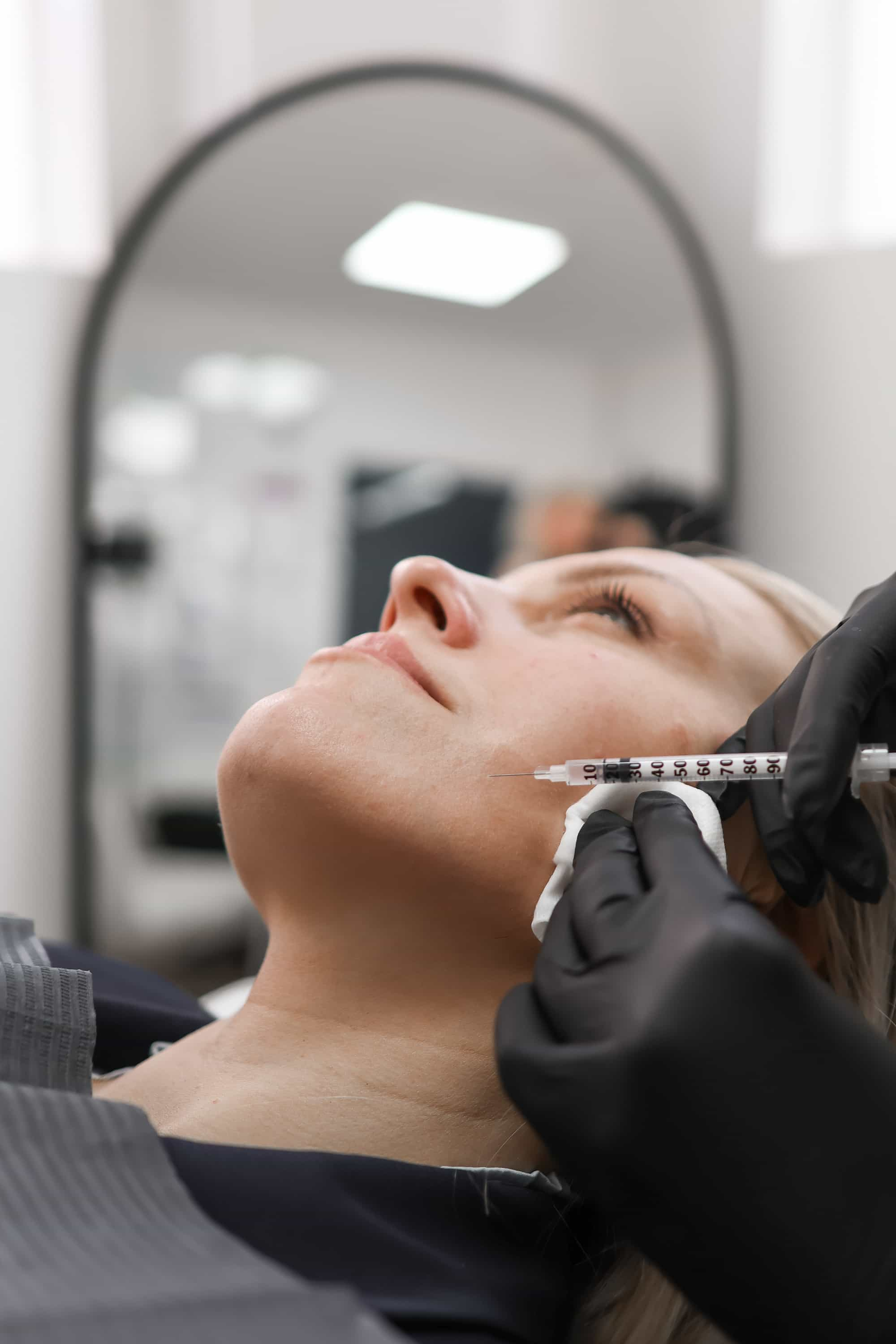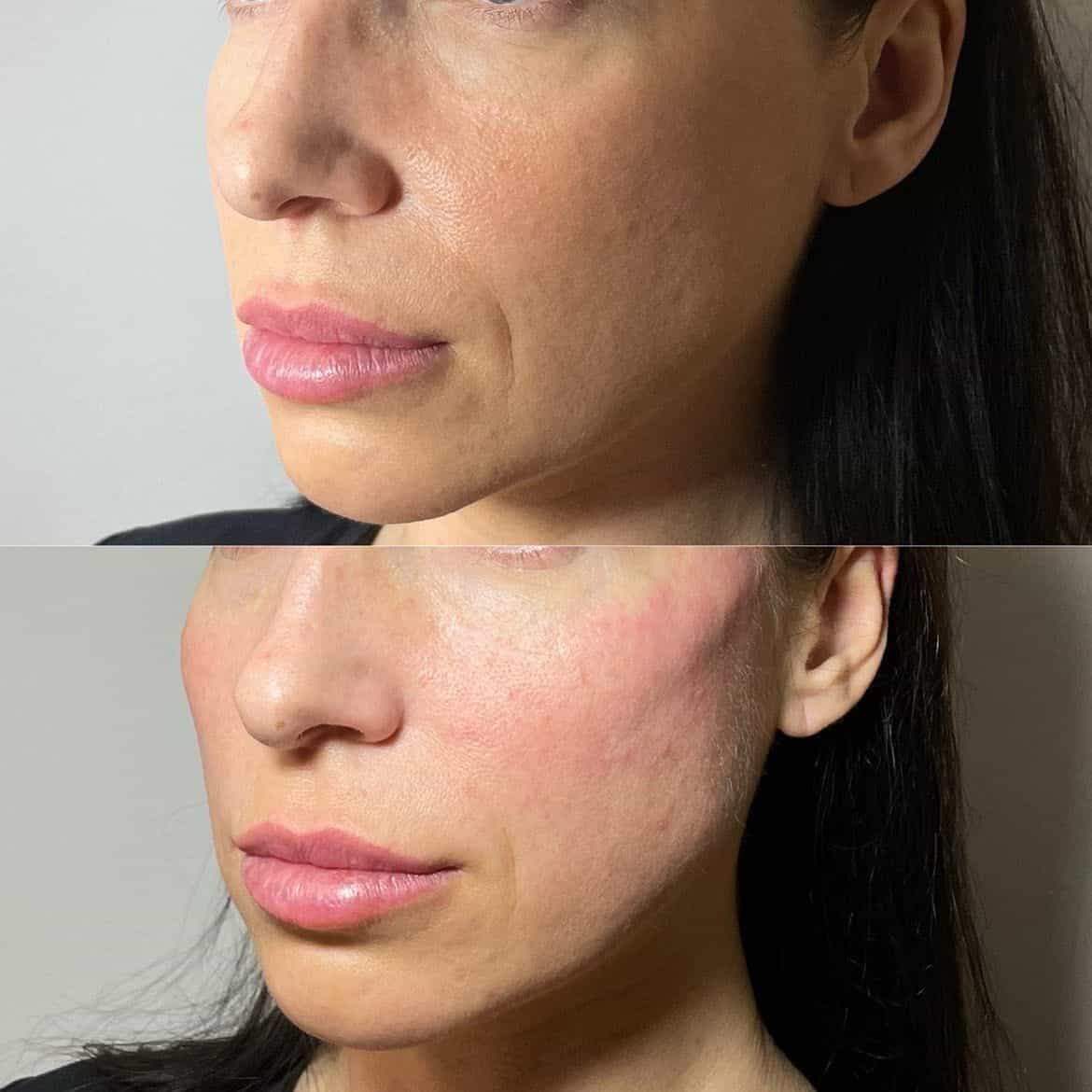Types of Treatments for DownTurned Smiles
A downturned smile, also known as a “frown line”, can affect facial appearance and confidence. Fortunately, several treatment options are available in the UK to address this aesthetic concern.
Orthodontic Treatment
Orthodontic treatment is a common approach for correcting downturned smiles. Braces or aligners can be used to gently move teeth into a more desirable position, improving the alignment of the jaw and upper lip.
Depending on the severity of the downturn, different types of braces may be recommended. Traditional metal braces offer effective treatment, while clear aligners like Invisalign provide a discreet option. The orthodontist will assess your individual case and recommend the most suitable treatment plan.
Braces
Orthodontic treatment is a common approach for correcting downturned smiles. Braces or aligners can be used to gently move teeth into a more desirable position, improving the alignment of the jaw and upper lip.
Depending on the severity of the downturn, different types of braces may be recommended. Traditional metal braces offer effective treatment, while clear aligners like Invisalign provide a discreet option. The orthodontist will assess your individual case and recommend the most suitable treatment plan.
Invisalign
Invisalign is a popular choice for correcting downturned smiles due to its discreet nature. It utilizes a series of custom-made, nearly invisible plastic aligners that gradually shift teeth into their desired positions.

Patients wear each aligner for a specified period, typically two weeks, before moving on to the next in the sequence. Regular check-ups with an orthodontist ensure the treatment progresses as planned and adjustments are made if needed.
Invisalign can effectively address mild to moderate downturned smiles by adjusting tooth position and improving lip alignment.
Botox Injections
Botox injections can also be used to temporarily elevate a downturned smile. Botox works by relaxing the muscles responsible for pulling down the corners of the mouth, resulting in a lifted appearance.

This treatment is often used in conjunction with fillers, which can add volume to the cheeks and lips, further enhancing the overall effect.
Dermal Fillers
Dermal fillers offer another option for addressing downturned smiles. These injections involve introducing hyaluronic acid gel into specific areas of the face.
In the case of a downturned smile, filler can be strategically placed along the jawline and in the corners of the mouth to lift and volumize these areas, thereby creating a more upward curve.
Results from dermal fillers are typically temporary, lasting several months to a year.
Factors to Consider When Choosing a Treatment
Choosing the right treatment for a downturned smile involves considering various factors specific to individual needs and preferences. Treatment options range from orthodontic solutions like braces or clear aligners to minimally invasive procedures such as Botox injections and dermal fillers.
Severity of the Downturned Smile
The severity of the downturned smile is a crucial factor when choosing a treatment. Mild cases may be effectively addressed with Invisalign or Botox, while moderate to severe cases might require traditional braces or comprehensive orthodontic treatment.
It’s also important to consider individual preferences, lifestyle, and budget. Some patients prioritize discretion and opt for clear aligners or Botox, while others prefer the long-term benefits of orthodontics. Treatment costs can vary significantly depending on the chosen method and the complexity of the case.
Consulting with a qualified dental professional or specialist is essential to determine the most suitable treatment plan based on your specific needs and goals.
Desired Outcome
Factors such as the severity of the downturned smile, individual preferences, lifestyle, and budget play a crucial role in choosing the right treatment.
The desired outcome also influences treatment selection. Those seeking long-lasting correction might opt for orthodontics, while individuals looking for a temporary lift may consider Botox or fillers.
Budget
Factors such as the severity of the downturned smile, individual preferences, lifestyle, and budget play a crucial role in choosing the right treatment.
- Severity of the Down turned Smile
- Individual Preferences
- Lifestyle
- Budget
- Desired Outcome
Personal Preferences
When deciding on a treatment for a downturned smile, several factors should be carefully considered. The severity of the downturn plays a significant role in determining the most appropriate course of action. Mild cases may respond well to minimally invasive options like Botox or Invisalign, while moderate to severe cases might require more extensive orthodontic treatment using braces.
Personal preferences also influence treatment selection. Some individuals prioritize discretion and opt for clear aligners or non-surgical procedures, while others are comfortable with longer-term commitments like traditional braces.
Lifestyle factors can impact the choice as well. Busy schedules might favor quicker treatments like Botox, while those with active lifestyles may prefer the stability of orthodontic appliances.
Budget considerations are also crucial. Treatment costs vary widely depending on the chosen method and complexity, so it’s important to factor this into the decision-making process. Finally, understanding your desired outcome is essential. Do you seek a temporary lift or a lasting correction?
Lifestyle and Oral Health
When deciding on a treatment for a downturned smile, several factors should be carefully considered. The severity of the downturn plays a significant role in determining the most appropriate course of action. Mild cases may respond well to minimally invasive options like Botox or Invisalign, while moderate to severe cases might require more extensive orthodontic treatment using braces.
Personal preferences also influence treatment selection. Some individuals prioritize discretion and opt for clear aligners or non-surgical procedures, while others are comfortable with longer-term commitments like traditional braces.
Lifestyle factors can impact the choice as well. Busy schedules might favor quicker treatments like Botox, while those with active lifestyles may prefer the stability of orthodontic appliances.
Budget considerations are also crucial. Treatment costs vary widely depending on the chosen method and complexity, so it’s important to factor this into the decision-making process.
Finally, understanding your desired outcome is essential. Do you seek a temporary lift or a lasting correction?
Finding a Qualified Professional
A downturned smile, also known as a “frown line,” can impact facial appearance and confidence. Fortunately, numerous treatment options are available in the UK to address this concern.
Orthodontists
To find the right orthodontist for treating a downturned smile, consider these steps:
Start by asking for recommendations from friends, family, or your general dentist.
Once you have some potential candidates, research their qualifications, experience, and patient reviews online.
Look for an orthodontist who is a member of a reputable professional organization like the British Orthodontic Society (BOS).
Schedule consultations with several orthodontists to discuss your specific needs and concerns. During these consultations, ask about their treatment approach, expected duration, and potential costs.
Don’t hesitate to ask questions and clarify any doubts you may have. Choosing the right orthodontist is a crucial step in achieving a beautiful and confident smile.
Cosmetic Dentists
Choosing the right cosmetic dentist for addressing a downturned smile involves careful consideration. Begin by seeking referrals from trusted sources, such as friends, family, or your general dentist.
Utilize online resources to research potential dentists, focusing on their qualifications, experience, and patient testimonials.
Look for dentists who are members of reputable professional organizations, like the British Dental Association (BDA) or the International Congress of Oral Implantologists (ICOI), to ensure they meet high standards of practice.
Schedule consultations with several cosmetic dentists to discuss your specific concerns and desired outcome. During these appointments, inquire about their experience treating downturned smiles, treatment options available, expected timelines, and associated costs.
Don’t hesitate to ask any questions that arise and choose a dentist who makes you feel comfortable and confident in their expertise.
Plastic Surgeons
Finding a qualified professional to address a downturned smile is essential for achieving the desired outcome. When choosing an orthodontist or cosmetic dentist, several factors should be considered.
Start by seeking recommendations from trusted sources such as friends, family, or your general dentist. These referrals can provide valuable insights into the experience and expertise of potential practitioners.
Online research is also crucial. Utilize reputable websites and platforms to gather information about orthodontists or cosmetic dentists in your area. Look for details on their qualifications, experience, patient reviews, and any professional organizations they belong to.
Membership in organizations like the British Orthodontic Society (BOS) or the British Dental Association (BDA) signifies adherence to ethical standards and professional guidelines.
Scheduling consultations with shortlisted candidates is essential. This allows you to discuss your specific concerns, treatment goals, and any questions you may have. A qualified professional will thoroughly assess your individual needs and provide personalized recommendations.
Don’t hesitate to inquire about their experience treating downturned smiles, the various treatment options available, expected timelines, and associated costs. It is also important to feel comfortable and confident in your chosen practitioner’s expertise and communication style.
Checking Credentials and Experience
Finding a qualified professional is crucial when seeking treatment for a downturned smile. Start by asking for recommendations from friends, family, or your general dentist. They may have personal experiences or insights that can guide your search.
Once you have some potential candidates, delve into their credentials and experience. Look for professionals who are certified and licensed to practice in the UK. Check if they are members of reputable professional organizations like the British Orthodontic Society (BOS) or the General Dental Council (GDC).
Reading online reviews from previous patients can also provide valuable insights into their expertise, communication style, and patient satisfaction.
Aftercare and Maintenance
Aftercare and maintenance are essential for ensuring long-lasting results from any treatment chosen to address a downturned smile. Following your orthodontist or dentist’s instructions carefully is crucial for optimizing outcomes and preventing complications.
Post-Treatment Instructions
Aftercare and maintenance are essential for ensuring long-lasting results from any treatment chosen to address a downturned smile. Following your orthodontist or dentist’s instructions carefully is crucial for optimizing outcomes and preventing complications.
- Wear retainers as instructed, especially if braces or aligners were used, to maintain the corrected tooth position.
- Practice good oral hygiene by brushing twice daily with fluoride toothpaste and flossing regularly to prevent plaque buildup and gum disease.
- Attend regular check-up appointments with your orthodontist or dentist for monitoring and any necessary adjustments.
- Be mindful of habits that could negatively impact the smile, such as biting fingernails or using teeth as tools.
- Protect your teeth by wearing a mouthguard during contact sports or activities that could cause injury.
Long-Term Maintenance
Aftercare and maintenance are crucial for ensuring long-lasting results from any treatment chosen to address a downturned smile. Following your orthodontist or dentist’s instructions carefully is paramount for optimizing outcomes and preventing complications.
- Retainer Wear: If braces or aligners were used, wear retainers as instructed to maintain the corrected tooth position.
- Oral Hygiene: Practice good oral hygiene by brushing twice daily with fluoride toothpaste and flossing regularly to prevent plaque buildup and gum disease.
- Regular Check-ups: Attend regular check-up appointments with your orthodontist or dentist for monitoring and any necessary adjustments.
- Habit Modification: Be mindful of habits that could negatively impact the smile, such as biting fingernails or using teeth as tools.
- Mouthguard Protection: Protect your teeth by wearing a mouthguard during contact sports or activities that could cause injury.
Consult with Dr. Laura Geige about your downturned smile at It’s Me & You Clinic.
- Traptox Aka Trapezius Botox Treatment Near Whyteleafe, Surrey - December 5, 2025
- Traptox Aka Trapezius Botox Treatment Near Hindhead, Surrey - December 2, 2025
- The Top Benefits Of CBD Gummies For Anxiety And Stress - November 27, 2025
